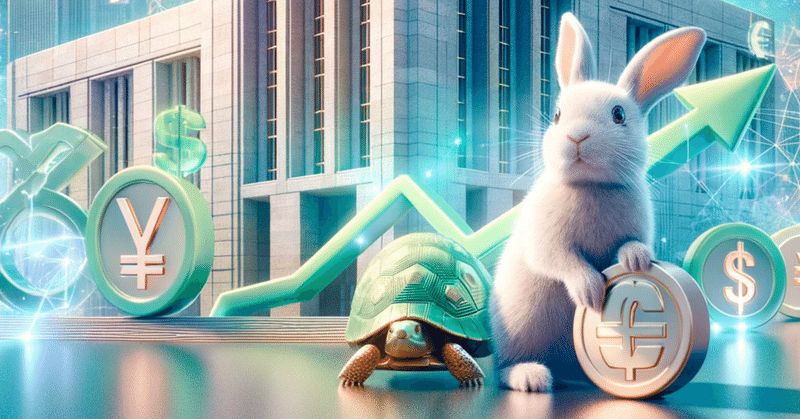
Japan:The Reversal of Negative Interest Rate Policy❀
The Bank of Japan (BOJ) is reportedly expected to decide on the reversal of the negative interest rate policy at the upcoming monetary policy decision meeting, sparking discussions.
Previous discussions have explored currency issuance. However, the current reversal of the negative interest rate policy is not about pumping more currency into the market. Instead, it is seen as a strategy to "modify societal mechanisms to normalize economic activity and promote healthy growth."
What is the Negative Interest Rate Policy?
Simply put, the negative interest rate policy is a strategy where banks must pay interest when depositing money with the central bank, effectively incurring a cost for storing money. This policy was introduced to encourage banks to actively circulate money through lending or investing, rather than merely depositing it.
For instance, imagine a "household piggy bank" where, due to the negative interest rate policy, the amount of money decreases over time when stored inside. This means that storing money in the piggy bank gradually leads to financial loss, aiming to benefit the entire family by stimulating more activities or investments. Under these circumstances, families were encouraged not only to store money but also to consider using it for purchases or investments.
What Does Reversing the Negative Interest Rate Policy Mean?
Reversing the negative interest rate policy means changing the operating rule applied to the "household piggy bank," allowing stored money not to decrease or potentially to increase. Specifically, it involves the central bank withdrawing the negative interest rate policy applied to financial institutions, eliminating the penalty for depositing money, and possibly allowing the accrual of interest. Consequently, banks might be able to deposit their funds with the central bank without losing them, potentially earning some level of interest.
The Significance of Reversal
The reversal of this policy aims to regulate the flow of money in the economy into a healthy cycle. Transitioning from an environment where the negative interest rate policy encouraged lending and other activities besides depositing, to applying a mechanism with actual interest rates, offers savings options and aims to balance it with healthy lending practices.
For example, money stored in the piggy bank will no longer decrease over time, providing families with greater assurance when saving money. With the elimination of the savings penalty, families now have the freedom to choose between spending or saving their money more freely. Consequently, this is expected to stimulate economic activities based on the free movement of the market.
Impact on Daily Life
1. Rise in Housing Loans and Corporate Financing Costs
After the reversal of the negative interest rate policy, financial institutions might increase the interest rates for housing loans and corporate borrowing that are linked to short-term interest rates. This could impact individuals considering purchasing new homes and companies in need of funds. In the short term, an increase in borrowing costs is expected.
2. Improvement in Interest Rates for Savings
The interest rates for savings and fixed deposits may improve, potentially benefiting especially those generations with significant financial assets or those who prioritize deposit interest rates for stable asset management.
3. Impact on the Value of the Yen
Changes in monetary policy can also affect the currency value. Generally, an increase in interest rates tends to attract foreign investment, strengthening the currency value and potentially leading to yen appreciation. This could lower the prices of imported goods, while potentially reducing the competitiveness of Japanese exporters.
4. Market Psychology and Economic Outlook
The BOJ’s decision to reverse the negative interest rate policy is based on an acknowledgment of rising wages and prices. If wage and price increases function appropriately, enhancing the market’s confidence in the Japanese economy, it could contribute to economic revitalization through consumption.
Conclusion
Although the reversal of the negative interest rate policy may lead to increased borrowing costs for individuals and companies in the short term, it holds the potential to contribute to the normalization and growth of the economy in the long term. However, the specific impact of this policy change will depend on future economic conditions and other policy measures, necessitating close monitoring.
The anticipated revitalization of consumption due to the decision to increase interest rates is expected to enhance corporate investment desire, stimulate wage increases, and, consequently, loosen consumers' purse strings, contributing to an economic virtuous cycle.
Personally, I hope that this policy change will significantly promote inbound tourism, thereby revitalizing the economy. Japan inherently possesses multiple attractive destinations for both domestic and international tourists. Incorporating this step towards economic normalization into a stable economic environment for travel experiences, while maintaining resilience against price increases, would be a desirable outcome.❀

この記事が気に入ったらサポートをしてみませんか?
